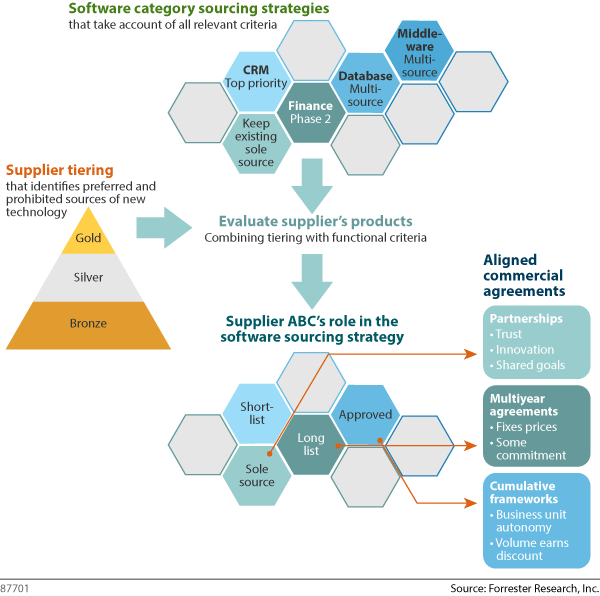New Year’s Resolutions For Sourcing Professionals: Eat Less, Exercise More, And Implement Strategic Software Sourcing
Avoid the 2013 holiday rush – start your year-end software negotiations now! Have you just about recovered from several adversarial, transactional software procurement negotiations last month? Have you resolved to avoid a similar situation next year? Then Forrester’s Strategic Software Sourcing Playbook can help you.
Apparently 38% of Americans made weight-related resolutions in 2012, and 67% of people with gym memberships never use them. So my advice is to shun anything you’ve seen in a TV infomercial (“we called it Lunacy because you’d have to be mad to buy it”) and instead make your New Year's resolution to be more strategic and proactive in your software buying in 2013. Our Playbook, launched today, explains how to do that.
Reactive, adversarial software buying is ineffective in the new business technology (BT) world of self-provisioning, cloud deployment, and mobile access. IT sourcing professionals' colleagues bypass them in the sourcing process, while powerful technology vendors expect more revenue from them than they can afford to provide. Software sourcing professionals rarely have alternative suppliers that they can use as negotiation leverage, so you need something more than your natural charm and belligerence if you are to be effective. Forrester's solution is a strategic approach that aligns the commercial model for each supplier with its place in the enterprise's software sourcing strategy.

The three foundations of Forrester’s strategic software sourcing approach are:
1. Supplier tiering that identifies preferred and prohibited sources of new technology. A formal process increases the sourcing executive’s negotiation leverage by enabling you to show a delinquent supplier how poor service or over-charging now will jeopardize its chances of winning future business.
2. Software category sourcing strategies that take account of all relevant criteria. This strategy adds the supplier tiering described above to traditional functionality assessment and portfolio considerations in order to define whether the organization will sole- or multisource in a specific product area, and from whom.
3. Commercial agreements that fit the supplier's place in this sourcing strategy. The overall sourcing strategy enables buyers to decide when they can safely commit to multiyear enterprise-wide deals, and thereby get the best possible prices and contract terms, and when to keep to smaller deals that target flexibility over price.
Our Playbook explains how and why to implement this model, with analysis of the major software pricing and licensing trends and their likely future impact. It also covers best practices for planning and executing the actual negotiations, and for ongoing optimization of the software sourcing process, including balanced deal assessment and software license optimization. Over the next few months we'll add reports on how to make the process transformation, deepen your supplier intelligence, and improve the ongoing relationships.
Bottom Line: There is no magic solution to the main challenge of software sourcing in 2013, which is that the Technoligarchy (the oligarchy of powerful incumbent technology suppliers) has the upper hand in most negotiations. However, Forrester’s Strategic Software Sourcing approach can help by enabling software sourcing executives to assemble all available bargaining leverage and focus it on getting the best possible deals. Why not make implementing it one of your resolutions for 2013?
